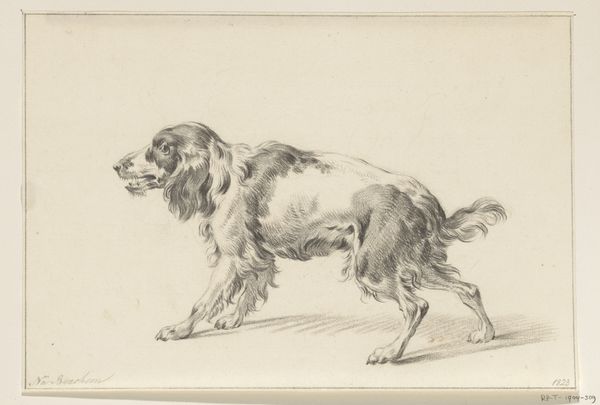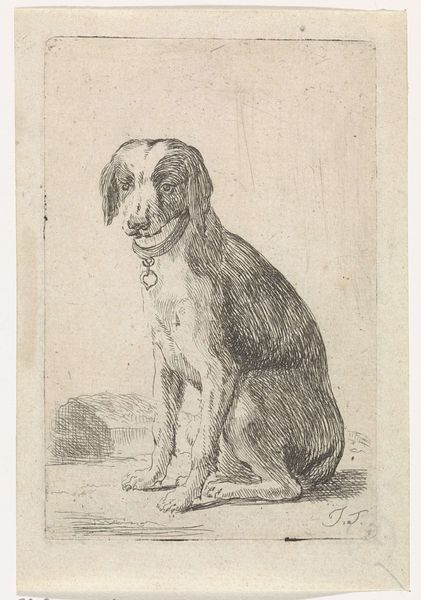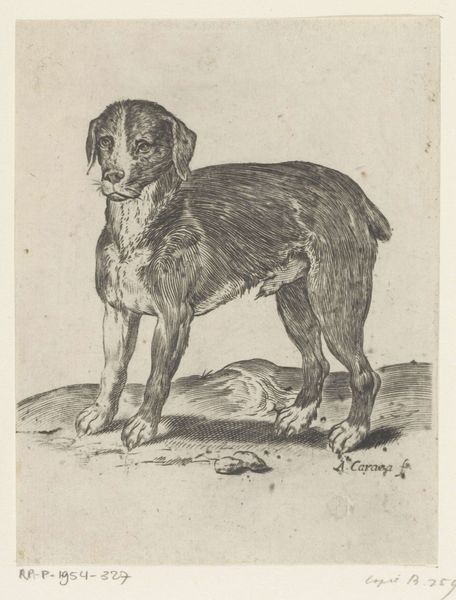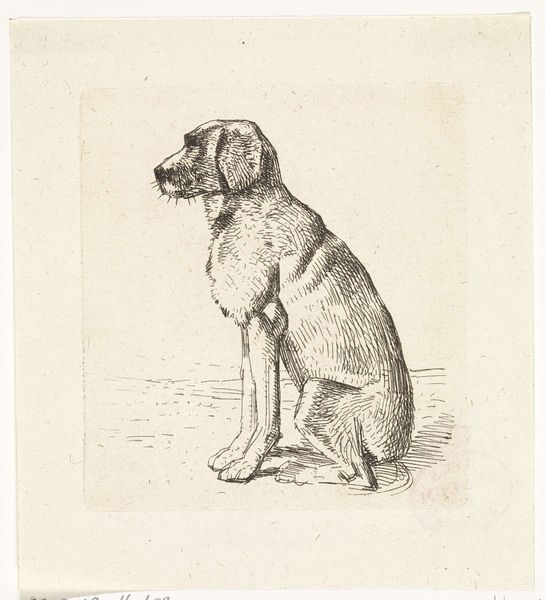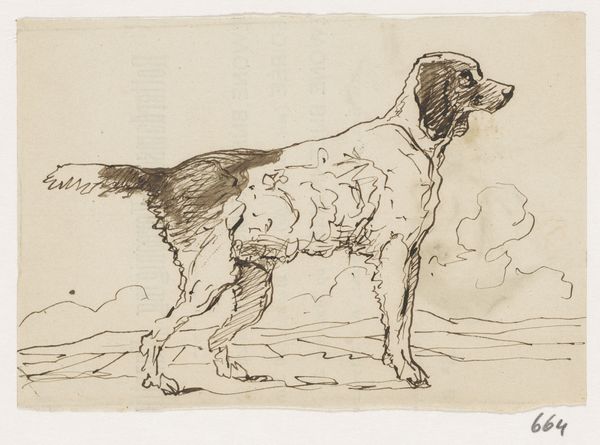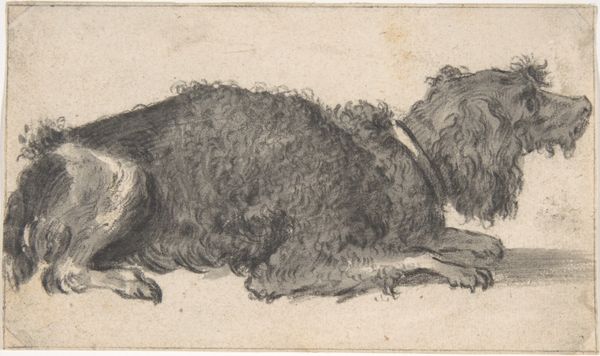
drawing, charcoal
#
portrait
#
pencil drawn
#
drawing
#
animal
#
pencil sketch
#
dog
#
landscape
#
figuration
#
pencil drawing
#
charcoal
#
realism
Dimensions: height 105 mm, width 132 mm
Copyright: Rijks Museum: Open Domain
Editor: Here we have "Standing Dog" by Jan Dasveldt, created sometime between 1780 and 1855. It’s a delicate drawing, maybe charcoal or pencil… there's a stillness about it, even a sadness in the dog’s eyes. What do you see in this piece? Curator: I see the echo of a long tradition of representing animals as more than just beasts of burden or objects of the hunt. This isn't merely a study of canine anatomy; it hints at companionship, perhaps even the dog as a symbol of loyalty and fidelity. Think of ancient Egyptian depictions of jackals connected to funerary rites, or even classical Greek depictions of dogs as guardians. Does the dog’s posture remind you of any specific symbolic animal postures you’ve encountered? Editor: Now that you mention it, the dog’s steady gaze almost feels like it's standing guard, but in a gentle way. But how does that connection translate here, so many years later? Curator: Notice the loose, almost impressionistic style. Dasveldt isn't striving for clinical accuracy but rather capturing an essence, a feeling. The dog's image becomes less about a specific breed and more about the idea of 'dog-ness', all those inherited connotations accumulating over time. The shadow becomes just as important as the solid form. Does the muted palette evoke a particular emotional response from you? Editor: I suppose there's a feeling of nostalgia to it, a sort of… timelessness. Curator: Precisely. The artist creates a conversation between form and shadow that can be interpreted and felt on many levels. It transcends realism into something far more lasting. Editor: This conversation changed how I see this unassuming animal portrait. It really makes you consider the enduring weight and relevance of inherited meanings in art.
Comments
No comments
Be the first to comment and join the conversation on the ultimate creative platform.

